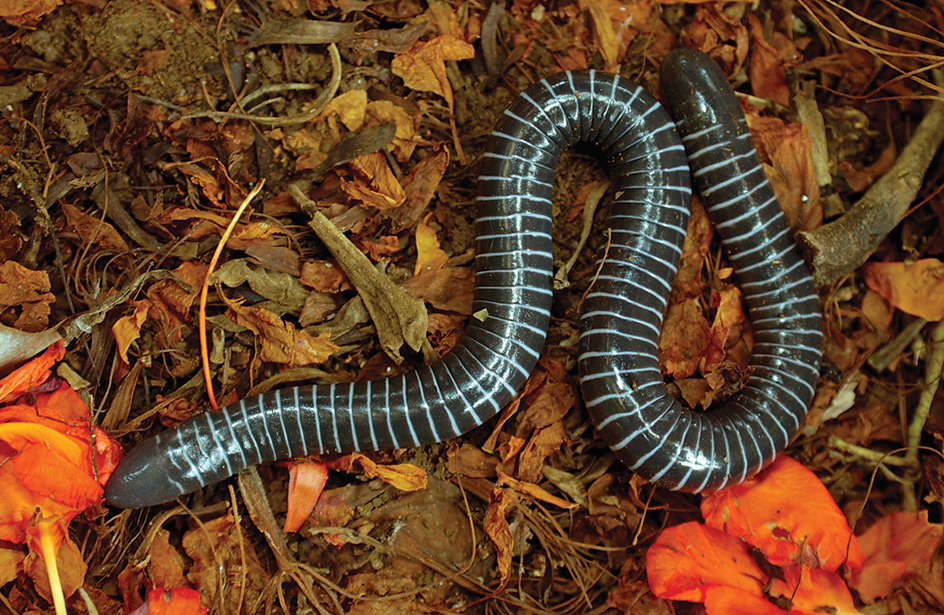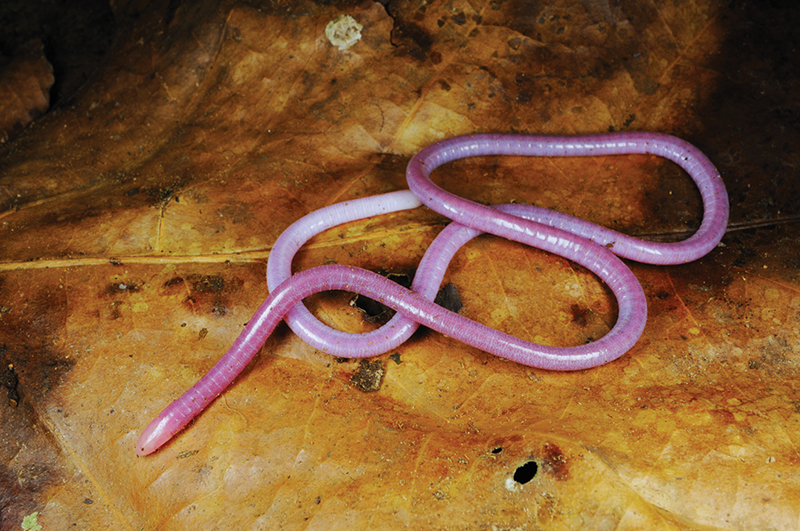Caecilian, << see SIHL ee uhn, >> is a legless amphibian that somewhat resembles an earthworm or snake. Most caecilian species (kinds) spend much of their lives underground. They live in tropical areas around the world.

The body of a caecilian is covered in grooves. The head is flat and bony, with a pointed snout. These features help a caecilian move through soil. Caecilians may be as small as 4 inches (10 centimeters) in length. The largest caecilians reach 5 1/2 feet (1.7 meters) long.

Most caecilians have gray or brown skin. A few species are bright blue or yellow. The skin of many species is distasteful to predators (hunting animals). But certain birds and snakes may eat caecilians.
All caecilians have small eyes. Many caecilians have skin or even bone growing over the eyes. A tentacle (feeler) grows between the nostrils and eyes. This tentacle detects odors in the soil. It helps the caecilian to seek out prey and find its way through the soil.
Most caecilians eat insects and other invertebrates (animals without backbones). Larger caecilians may eat lizards or baby mice.
Some caecilians lay eggs. Others give birth to live young. Caecilians can live up to 14 years.
